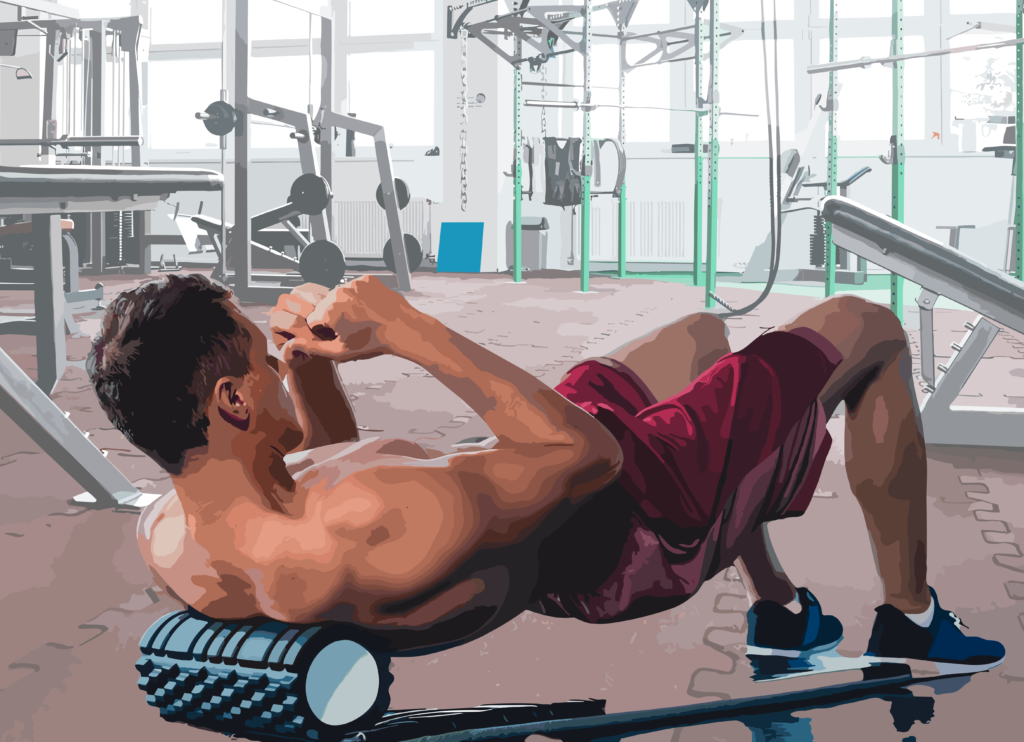Ever tried to “bend it like Beckham” and ended up more like “stuck it like a stick”? In an age where biohacking is the buzzword and everyone’s trying to get an edge, flexibility often gets sidelined. I mean, who needs to touch their toes when they’re busy optimizing their brain waves, right? But here’s the twist: flexibility isn’t just for those twisty-turny gymnasts or your aunt who swears by her morning yoga. It’s for every man who wants to move better, feel better, and yes, look better in those jeans.
Mobility vs. Flexibility: Clearing the Air
So, before we dive deep, let’s get our terms straight. Mobility and flexibility might sound like the title of a rejected 80s pop duo, but they’re quite distinct. Flexibility is all about the muscles – their ability to stretch and elongate. Mobility, on the other hand, is about how well a joint moves through its range of motion. Think of flexibility as the stretchiness of a rubber band and mobility as the hinge on a door. And just to clear the air, “It’s like comparing apples to…well, really bendy apples.”
Why Every Modern Man Needs a Dose of Flexibility
Picture this: You’re grinding away at your 9-5 desk job, churning out those reports and smashing those deadlines. But there’s another thing you’re smashing: your posture. The modern sedentary lifestyle is the arch-nemesis of flexibility. Hours spent hunched over keyboards and steering wheels have given rise to the dreaded “office chair hunchback”. And let’s be honest, “walking like the Hunchback of Notre-Dame? Not a great look.” But fear not! With a dash of dedication and a sprinkle of stretching, you can combat the slump and strut with the swagger of a man who knows his moves.

The Biohacker’s Guide to Mobility Moves
So, how does a person tap into this magical world of enhanced movement and bendiness?
- Dynamic Stretching : This isn’t your grandma’s stretching. Dynamic stretching is all about movement. Think leg swings, arm circles, and torso twists. It’s like giving your muscles a warm-up before the main event. And the best part? This technique primes your body, so you’re ready for any physical challenge. Plus, it’s a solid move to sidestep those annoying injuries.
- Foam Rolling : Ever grappled with a pesky muscle knot that just won’t quit? No, not the kind you get when you tie your shoelaces. We’re talking about those tight spots that scream when you press on them. Say hello to foam rolling, the do-it-yourself massage method that’s taken over the gym scene like a whirlwind. It’s like having a personal masseuse on call, minus the spa music. And here’s a fun fact: “Think of foam rolling as a massage where you’re both the masseuse and the client. Economical, right?”
- Yoga and Pilates : Before you roll your eyes and think of pastel-colored mats and serene music, hear me out. Yoga and Pilates aren’t just for zen masters or your sister’s bachelorette party. They’re truly practical elements in the toolkit of any biohacker. Through a blend of stretches, core strengthening, and balance drills, they pack a powerful punch for enhancing movement and suppleness. Plus, who wouldn’t want to casually drop into a conversation that they can hold a plank for five minutes or master the crow pose?

Benefits That Go Beyond the Bend
Flexibility isn’t just about impressing your friends with party tricks or finally reaching that pesky itch on your back. It’s also important for your overall health and well-being.
- Improved Workout Performance and Reduced Injury Risk: Think of your muscles as rubber bands. The more you can stretch them without snapping, the better they function. This means more efficient workouts and fewer “Ouch! I think I pulled something” moments.
- Enhanced Posture: Remember the “office chair hunchback” we talked about? Regular flexibility work can help you stand tall and proud, whether you’re presenting in the boardroom or flipping burgers at the family barbecue.
- Boosted Blood Circulation: Flexible muscles are happy muscles. And happy muscles love a good dose of oxygen-rich blood. This not only helps in muscle recovery but also gives you that energetic feeling.
- Light-hearted comment: “Who knew touching your toes could make you feel like a rockstar? Or at least a very limber roadie.”

Common Flexibility Faux Pas
As with anything in life, there’s a right way and a wrong way to go about it. And flexibility is no exception.
- Overstretching: Just because you can stretch it doesn’t mean you should overdo it. Remember, muscles are like elastic bands, not spaghetti noodles.
- Ignoring Pain: A little discomfort? Normal. Feeling like your muscle are about to snap? Not so much. Listen to your body.
- Neglecting Consistency: You wouldn’t expect to get ripped after one gym session, right? Same goes for flexibility. It’s a journey, not a one-off event. “Yes, trying to do the splits after one yoga class is as bad an idea as it sounds. And probably a lot more painful.”
Incorporating Mobility into Your Routine: Practical Tips
Alright, gents, let’s get down to the nitty-gritty. How do you make flexibility a part of your daily routine?

- Setting Realistic Goals: Aim to touch your toes before trying to recreate a Cirque du Soleil act. Baby steps.
- Making it a Daily Habit: Whether it’s a few stretches when you wake up or a wind-down routine before bed, make it a part of your day.
- Using Tech: There’s an app for everything these days, including flexibility. From guided stretches to full-blown yoga classes, your smartphone can be your flexibility sensei.
- Humorous suggestion: “Consider setting a ‘stretch alarm’ every few hours. It’s like a wake-up call, but instead of jolting you out of sleep, it’s coaxing you into a hamstring stretch.”
So there you have it, the lowdown on why flexibility is the unsung hero of the fitness world. Whether you’re looking to improve your athletic performance, stand a little taller, or just feel better in your day-to-day life, a little bend and stretch can go a long way. And remember, it’s not about being the most flexible guy in the room; it’s about being a better, more mobile version of yourself. So, are you ready to bend it better than Beckham? Dive into the world of flexibility. And just for the record, no capes or yoga pants are necessary – but hey, whatever floats your boat!
Unleashing the Brain’s Potential: The Nootropic Boost Every Man Needs(Opens in a new browser tab)
| RELEVANT STATISTICS |
| Sedentary Lifestyle Consequences: According to the World Health Organization (WHO), physical inactivity is the fourth leading risk factor for global mortality, causing an estimated 3.2 million deaths globally. This underscores the importance of combating the sedentary nature of many modern jobs with flexibility and mobility exercises. |
| Posture and Pain: A study published in the Journal of Physical Therapy Science found that poor posture, especially in those who sit for extended periods, can lead to musculoskeletal pain. |
| Flexibility and Aging: Research from the American Journal of Physiology indicates that flexibility decreases with age, especially after the age of 30. This makes the incorporation of flexibility exercises crucial as one gets older. |
| Injury Prevention: A study in the Journal of Strength and Conditioning Research found that athletes who incorporated flexibility training into their routines experienced a significant reduction in the number of injuries compared to those who didn’t. |
| Mental Health Benefits: According to Harvard Health Publishing, mind-body exercises like yoga, which emphasize flexibility, can help reduce symptoms of depression and anxiety. |
| Economic Impact: The American Chiropractic Association reports that back pain costs are estimated to be $50 billion annually in the U.S. A significant portion of this can be attributed to postural issues and muscle imbalances, which flexibility and mobility exercises can help address. |




